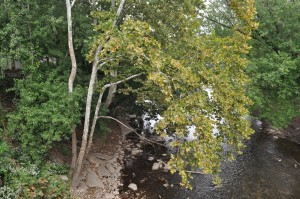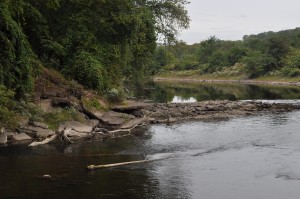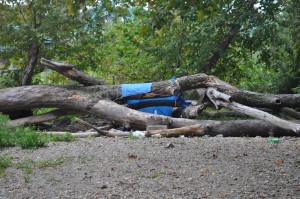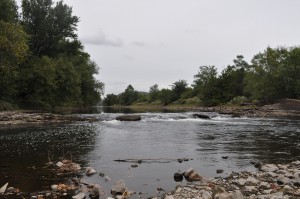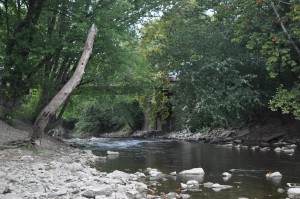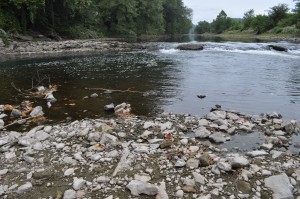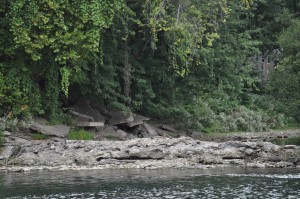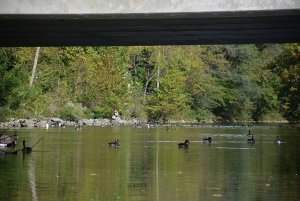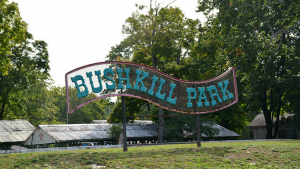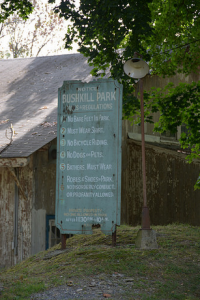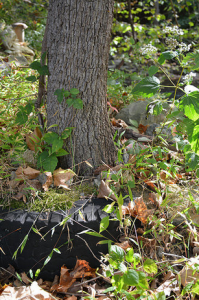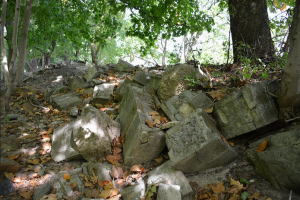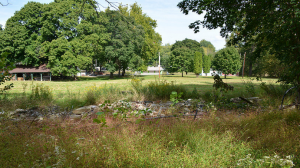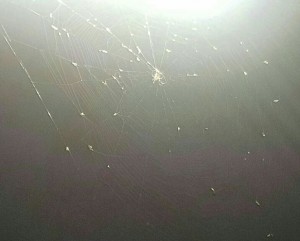In our third visit to the site our group made a conscious effort to try and notice something we had not previously noticed about the site and to notice something that had changed. The first thing we immediately noticed that was new was the smell of the island. It was not a new thing we had to search for. As we had walked across the bridge, we had all wrinkled our noses at the terrible smell, but assumed it was from the construction site. Yet after walking down to the shore the smell remained. We were confused by the origin of the smell, but new it was overpowering and smelled like mold. It changed the way we viewed our site and how long we had hoped to stay there. The main change we noticed in our third trip down to the site was that many of the leaves closest to the shore had begun to change into their fall colors while those further away remained green. We wondered whether this was due to the type of plant that grew closer to the shore or that it was slightly warmer further away from the water.
Along with visiting the island, this week our group did a lot of background research. We discovered that Getter’s Island sits in the Delaware opposite the mouth of the Bushkill River at Easton. Years ago the place was called Abel Island. It was named for a respected local family who listed the island among its extensive land holdings, although some people believed in commemoration of a murder. The island’s association with murder, and its present name, didn’t occur until long after that original crime in 1833.
Carl Getter was a young recent German immigrant who had found employment as a farm laborer in Easton. Carl was known for being quite the ladies man. On January 19, 1833, he was charged by Margaret Lawall with being the father of his unborn child. The Easton magistrate gave him a choice of marriage or prison, and he chose to marry her, hoping it would be the easier path. Although married, Carl continued to pursue other women, namely being Molly Hummer. Carl liked Molly a lot, and chose to end his short marriage to Margaret.
On the frozen morning of February 28, the body of Margaret Lawall Getter was found in a limestone quarry about three miles from Easton. The woman, still with her unborn child, was choked to death. Police arrested Getter the very same day for her murder.
The murder became the area’s most sensational crime. Getter’s lawyer could not get him off of the hook and he to be hung on October 31st. Due to the intense public interest, the hanging was to occur on Abel’s Island. People came and stayed in hotels near Easton to see the hanging.
The first time they tried to hang him, the rope broke when he was only three feet off the ground. Getter smirked and said, “Well that was good for nothing.” The second time when the job was done, Getter remained in the air for eleven minutes quivering, when all motion ceased. After 30 minutes he was cut down and put in his coffin.
Although Getter’s life was short, he is now immortal because the Island lives on in his name.
The island was the site of another tragedy thirty years later when the steamboat Alfred Thomas exploded on its shore. From this catastrophe- the barren sands were strewn with the bodies of innocent victims who, unlike Carl Getter, had committed no crime at all.
